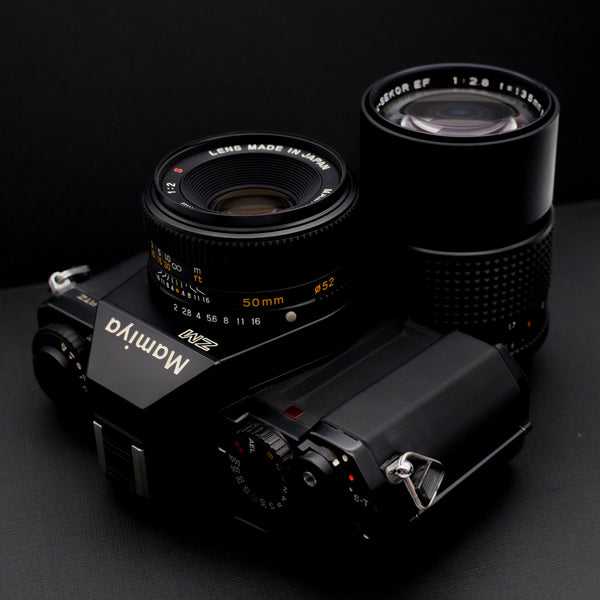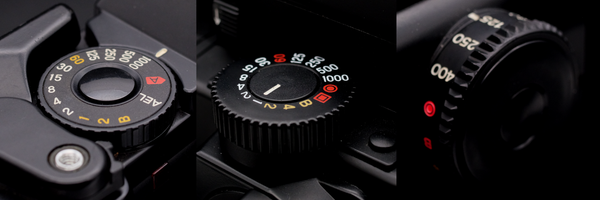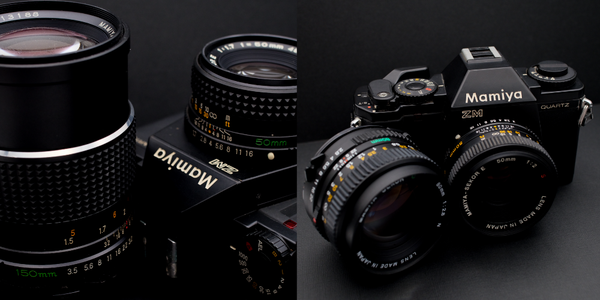Mamiya's Final 35mm SLR - Mamiya ZM (1982)

In the photography world, most camera companies have had fairly impressive swansong flagship 35mm SLR film cameras. While they often weren't the final film cameras that the company launched before moving to digital or exiting the camera market altogether, they were usually the most memorable. Nikon had the F6. Minolta’s was the alpha/Maxxum/Dynax 7. Canon had the EOS-1V. Mamiya’s departure from the 35mm SLR market, however, was not so elegant. Their only comparable ‘flagship’ was the short-lived Mamiya ZE-X, and their final 35mm SLR was the Mamiya ZM. A simple, straightforward manual focus camera with aperture priority and shutter speeds from 1/1000s to 2s - very typical specifications of an SLR at the time of the prosumer and amateur market.

The circumstances surrounding it being Mamiya’s final 35mm SLR however, were fairly unfortunate. Both Mamiya Camera Company and its sole overseas distributor, J. Osawa & Company had to file for bankruptcy back in ‘84. After corporate restructuring and financial considerations, Mamiya stopped production of all 35mm cameras, including the Mamiya ZM. Yet despite its fairly standard specifications, its status as the last Mamiya 35mm SLR makes it a camera worth discussing.
The ZM was supposedly designed by the same person - Tsuneaki Tsuyoshi - who was also responsible for the Mamiya 645 Super, and Mamiya RZ67. I say supposedly, because that’s what is supposedly written in the December 1984 issue of the Japanese photography magazine Shashin Kougyou, of which I have unfortunately struggled to find a copy. Even so, it’s not hard to see the similarities - from the sharp edges to the shutter speed dial design, if you’ve used a 645 Super or RZ67, the ZM will look familiar.

Launched in 1982, it’s easy to see that the camera’s design was also a product of its time. The plastic top cover, slanted pentaprism cover and grip were all common features of 35mm SLRs of the early 80’s. The shutter button no longer has a thread for an external shutter release, which had been moved to the top of the housing covering the film advance lever and on, off and self-timer switches.

You can imagine that Mamiya weren’t expecting to drop their 35mm lineup so abruptly. Judging by the aesthetic of the last generation of Z/ZE mount lenses, it looked like they were likely to expand their lineup at the least to match their updated medium format lineup that they were also releasing at the time - below are a comparison of Mamiya 645 lenses with their similarly styled Z counterparts.

Functionally, there were 11 electronic pins and automatic aperture selection mode on the lens' aperture ring that were only all functional on one camera, the ZE-X, while all other models used the 'standard' six electronic pins to communicate information with the lens. Mamiya likely had plans for either more models or a new flagship that could take advantage of these extra features built into the lens mount. On paper, the Mamiya ‘Z’ generation 35mm SLRs were nothing particularly unique, yet they were comfortable and enjoyable to use, with surprisingly sharp optics, and this too applies to the Mamiya ZM. The protruding rubber grip along with its lightweight body make the camera very easy to hold in the hand. The shutter actuation is well-dampened, making a satisfying click. The LED indicator in the bright viewfinder is simple and straightforward to use, and in aperture priority automatic mode, an audio signal warns the user if the camera is going to pick a slow shutter speed below 1/30s. The focus screen has a central split image, surrounded by a microprism collar.

The top cover is simple to take off, with the viewfinder eyepiece also held in with just two screws. The camera uses two 1.5V LR44 batteries, yet these seem to last, as is typical for cameras of this generation, several years with light use. The camera has a removable focus screen, making it easy to clean out any dust trapped below the pentaprism.

The lenses available were excellent optically, despite build quality lacking with a partially plastic construction, particularly for the newer models. The two pictures below were taken on the ZM in aperture priority. The Mamiya-Sekor EF 135mm f/2.8 was used for image of the leaves, while the Mamiya-Sekor EF 50mm f/1.4 was used for the image of the house, both on Kodak T-MAX 100 developed in Ilfosol 3.




Leave a comment